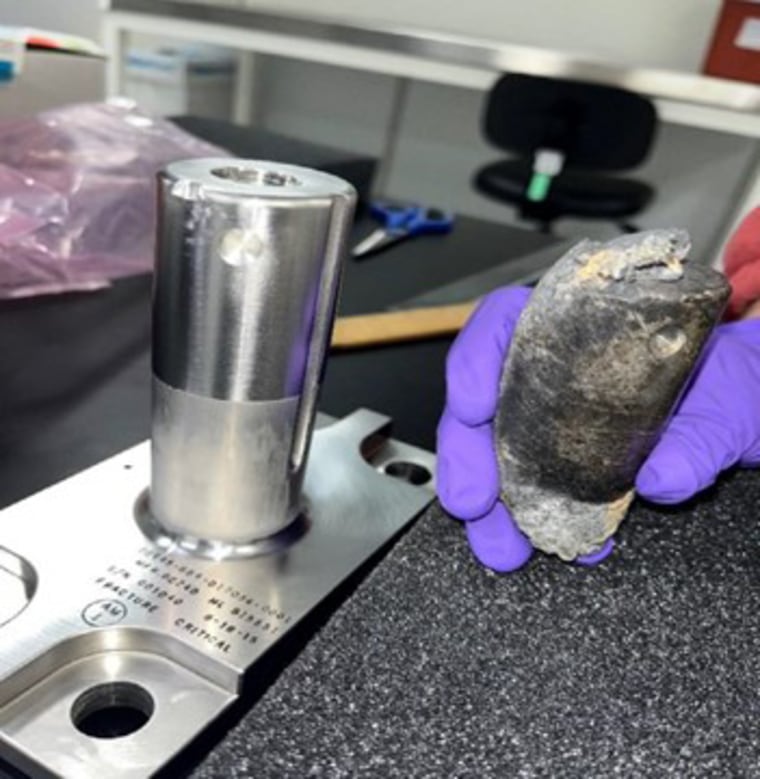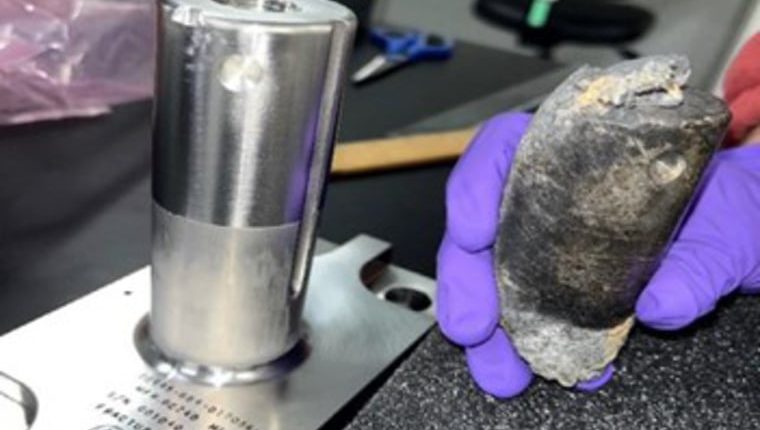A piece of metal that tore through a Florida home last month was space junk from the International Space Station, according to NASA.
The agency confirmed Monday that the 1.6-pound object was debris from a cargo pallet that had been intentionally released from the space station three years ago.
The pallet, packed with aging batteries, was supposed to burn up harmlessly in Earth’s atmosphere, but a piece survived — the piece that smashed into a house in Naples, Florida, on March 8.
WINK News, a CBS News affiliate in southwestern Florida, first reported the incident. Naples resident Alejandro Otero told the outlet that the object crashed through the roof and two floors of his home. Otero was not home at the time, he told WINK News, but the metal object nearly hit his son, who was two rooms away.
Otero did not immediately respond to a request for comment.
In a blog post about the incident, NASA said it had analyzed the object at the Kennedy Space Center in Florida and confirmed that it was part of the equipment used to mount the batteries on the cargo pallet.
The piece of space junk is roughly cylindrical in shape and is about 4-inches tall and 1.6-inches wide. NASA said agency staff studied the object’s features and metal composition and matched it to the hardware that had been jettisoned from the space station in 2021.

At that time, new lithium-ion batteries had recently been installed at the space station, so the old nickel hydrogen batteries were packed up for disposal. The space station’s robotic arm released the 5,800-pound cargo pallet containing the batteries over the Pacific Ocean, as the outpost orbited 260 miles above the Earth’s surface, according to NASA.
It’s not uncommon for space agencies and commercial space companies to discard defunct hardware in this manner, since it avoids contributing to Earth’s space junk problem. Tens of thousands of pieces of such junk — and millions more smaller bits of orbital debris — already clutter the space around the planet. Objects that enter the atmosphere leave space and burn, rather than joining that debris field.
In most cases, dead satellites, spent rocket parts and other objects burn up completely in the atmosphere, but occasionally, some pieces survive the fiery journey.
Most fall into the ocean. In May 2021, for instance, debris from a 20-ton Chinese rocket landed in the Indian Ocean. China was criticized for not adequately tracking its used rocket stages, and the episode sparked ongoing debates on the safe handling of space junk.
In February, the European Space Agency monitored a dead satellite as it fell back to Earth uncontrolled over the Pacific Ocean.
In 2011, NASA dealt with a similar situation when a bus-size satellite made an uncontrolled re-entry through the atmosphere. What survived from the decommissioned satellite plunged into a remote part of the Pacific.
NASA said it will perform a detailed investigation of the latest debris incident to determine how the object withstood the extreme trip through the atmosphere.
“NASA specialists use engineering models to estimate how objects heat up and break apart during atmospheric re-entry,” agency officials wrote in the blog post. “These models require detailed input parameters and are regularly updated when debris is found to have survived atmospheric re-entry to the ground.”
Source: | This article originally belongs to Nbcnews.com










